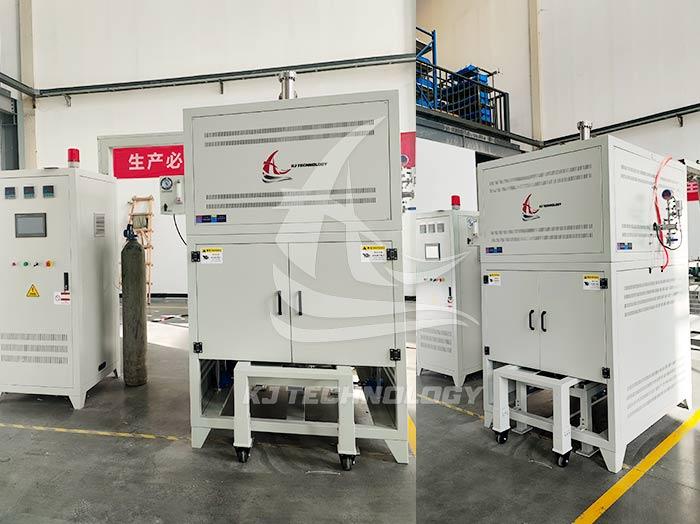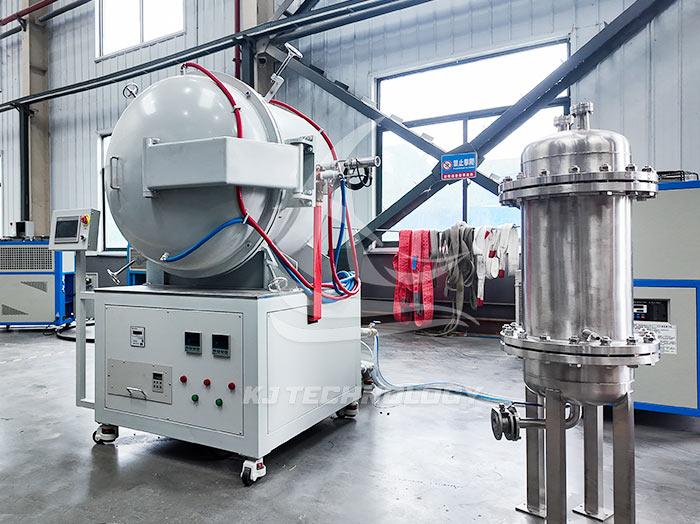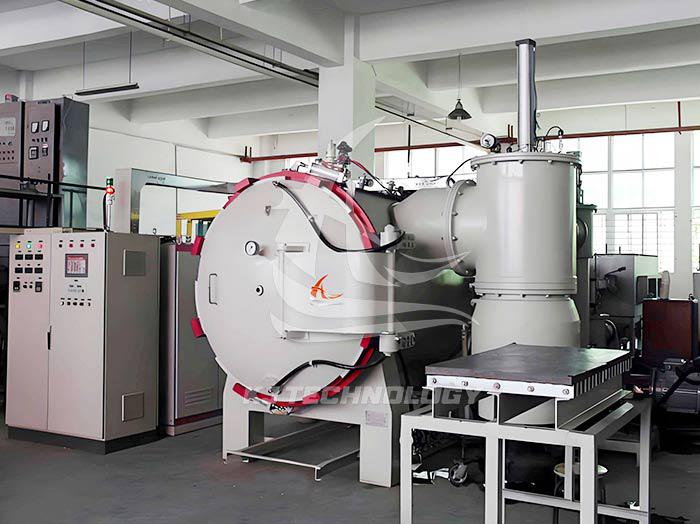The vacuum in the laboratory powder sintering furnace cannot be raised
 08-08-2025 Author: KJ technology
08-08-2025 Author: KJ technology
The inability to increase the vacuum in the laboratory powder sintering furnace may be caused by vacuum pump problems, system leaks, insufficient pumping time, filter blockages, oil contamination, valve failures, internal leakage issues, operational errors, and other reasons. The following are specific analysis and solutions:
1. Vacuum pump related issues
Pump oil contamination or insufficient:
Reason: Pump oil pollution or insufficient or too thin can affect the pumping efficiency of the vacuum pump.
Solution: Clean the vacuum pump and replace it with new vacuum pump oil.
Vacuum pump oil leakage:
Reason: Blockage of the return valve may cause oil leakage from the vacuum pump.
Solution: Remove the return valve, clean and reinstall it.
Decreased performance of vacuum pump:
Reason: Long term use or improper maintenance may lead to a decrease in the performance of the vacuum pump.
Solution: Check the operating status of the vacuum pump and repair or replace it if necessary.
2. System leakage issue
Aging or damage of sealing ring:
Reason: Aging or damage of sealing rings at furnace doors, observation windows, and pipeline connections can cause gas leakage.
Solution: Check and replace the aging sealing ring to ensure good sealing.
Loose or damaged pipeline connections:
Reason: Loose or damaged pipeline connections can also cause gas leaks.
Solution: Check the connection of the pipeline, tighten loose connections or replace damaged pipelines.
3. Insufficient pumping time
The pumping time is too short:
Reason: Stopping pumping before reaching the target vacuum level can result in insufficient vacuum.
Solution: Extend the pumping time to ensure the target vacuum level is achieved.
4. Filter blockage
Blockage of exhaust filter:
Reason: Blockage of the exhaust filter can affect the exhaust efficiency.
Solution: Clean or replace the exhaust filter.
5. Oil pollution
Pump oil contamination:
Reason: Pump oil contamination can affect the performance of vacuum pumps.
Solution: Replace with new oil and ensure that the pump oil is clean.
6. Valve malfunction
Vacuum valve malfunction:
Reason: Vacuum valve malfunction may cause gas to be unable to be discharged or enter normally.
Solution: Check the operating status of the vacuum valve to ensure that it opens and closes normally.
7. Internal leakage problem
Internal leakage detection and handling:
Reason: Internal leakage often occurs on equipment with water cooling points, which may lead to significantly low pumping speed of mechanical pumps, low vacuum gauge readings, rapid emulsification of mechanical pump oil, and obvious corrosion of iron-based components in the vacuum chamber.
resolvent:
Clean the cavity first, and then add cooling water.
Carefully check if there are any wet spots in the water supply pipeline, and the wet spots are the leakage points.
Repair or replace relevant components for the leakage point.
8. Operational process issues
Operation process error:
Reason: Failure to follow the correct operating procedures for pumping may result in insufficient vacuum.
resolvent:
Close all vacuum valves tightly, start the mechanical pump, and wait for it to operate normally. Then, open the low vacuum valve leading to the furnace body and evacuate the furnace in advance. This valve should be opened slowly to prevent oil from spraying out at the exhaust port of the mechanical pump.
While extracting furnace gas, open another low vacuum valve to extract air from the diffusion pump.
When the vacuum degree reaches a certain value, turn on the cooling water on the diffusion pump and then heat the diffusion pump.
After the vacuum degree inside the furnace reaches the required level, close the vacuum valve leading to the furnace body, open the high vacuum valve, and continue pumping until the target vacuum degree is reached.








